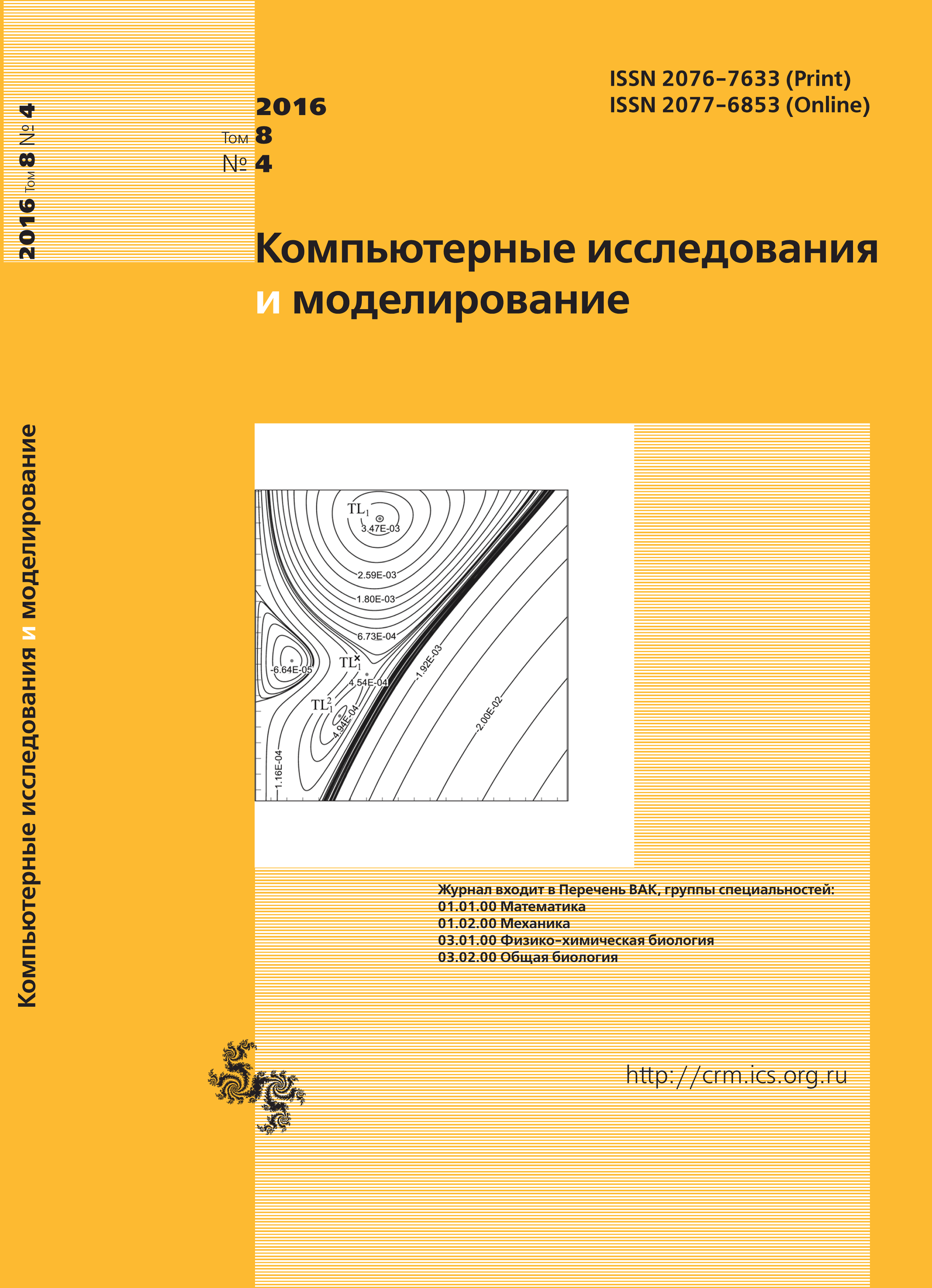All issues
- 2025 Vol. 17
- 2024 Vol. 16
- 2023 Vol. 15
- 2022 Vol. 14
- 2021 Vol. 13
- 2020 Vol. 12
- 2019 Vol. 11
- 2018 Vol. 10
- 2017 Vol. 9
- 2016 Vol. 8
- 2015 Vol. 7
- 2014 Vol. 6
- 2013 Vol. 5
- 2012 Vol. 4
- 2011 Vol. 3
- 2010 Vol. 2
- 2009 Vol. 1
Analysis of noise-induced destruction of coexistence regimes in «prey–predator» population model
The paper is devoted to the analysis of the proximity of the population system to dangerous boundaries. An intersection of these boundaries results in the collapse of the stable coexistence of interacting populations. As a reason of such destruction one can consider random perturbations inevitably presented in any living system. This study is carried out on the example of the well-known model of interaction between predator and prey populations, taking into account both a stabilizing factor of the competition of predators for another than prey resources, and also a destabilizing saturation factor for predators. To describe the saturation of predators, we use the second type Holling trophic function. The dynamics of the system is studied as a function of the predator saturation, and the coefficient of predator competition for resources other than prey. The paper presents a parametric description of the possible dynamic regimes of the deterministic model. Here, local and global bifurcations are studied, and areas of sustainable coexistence of populations in equilibrium and the oscillation modes are described. An interesting feature of this mathematical model, firstly considered by Bazykin, is a global bifurcation of the birth of limit cycle from the separatrix loop. We study the effects of noise on the equilibrium and oscillatory regimes of coexistence of predator and prey populations. It is shown that an increase of the intensity of random disturbances can lead to significant deformations of these regimes right up to their destruction. The aim of this work is to develop a constructive probabilistic criterion for the proximity of the population stochastic system to the dangerous boundaries. The proposed approach is based on the mathematical technique of stochastic sensitivity functions, and the method of confidence domains. In the case of a stable equilibrium, this confidence domain is an ellipse. For the stable cycle, this domain is a confidence band. The size of the confidence domain is proportional to the intensity of the noise and stochastic sensitivity of the initial deterministic attractor. A geometric criterion of the exit of the population system from sustainable coexistence mode is the intersection of the confidence domain and the corresponding separatrix of the unforced deterministic model. An effectiveness of this analytical approach is confirmed by the good agreement of theoretical estimates and results of direct numerical simulations.
Copyright © 2016 Bashkirtseva I.A., Boyarshinova P.V., Ryazanova T.V., Ryashko L.B.
- , , , , . The key approaches and review of current researches on dynamics of structured and interacting populations. // Computer Research and Modeling. — 2019. — V. 11, no. 1. — P. 119. DOI: 10.20537/2076-7633-2019-11-1-119-151
- , . Dynamic regimes of the stochastic "prey - predatory" model with competition and saturation. // Computer Research and Modeling. — 2019. — V. 11, no. 3. — P. 515. DOI: 10.20537/2076-7633-2019-11-3-515-531
Indexed in Scopus
Full-text version of the journal is also available on the web site of the scientific electronic library eLIBRARY.RU
The journal is included in the Russian Science Citation Index
The journal is included in the RSCI
International Interdisciplinary Conference "Mathematics. Computing. Education"







